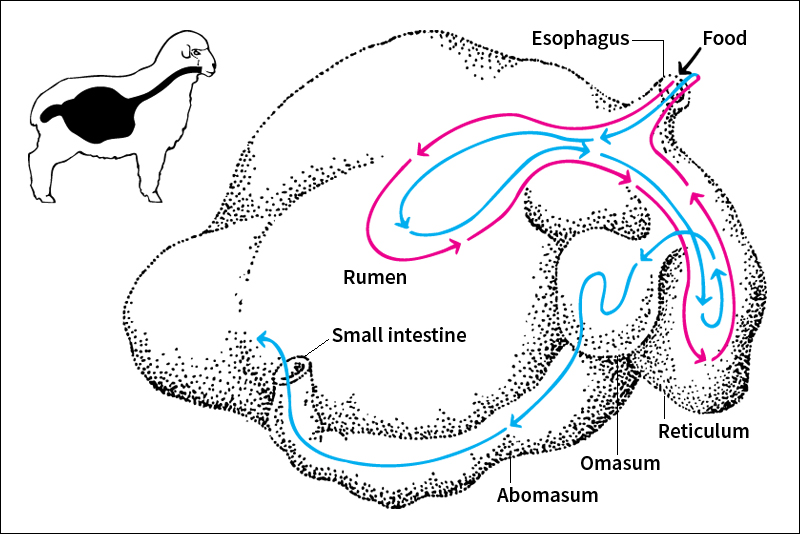Ruminant is the name given to a grazing animal that has a highly specialized digestive system and split hoofs. Such mammals as sheep, cows, oxen, deer, antelope, camels, llamas, and giraffes are ruminants. Most kinds of ruminants have a stomach with four cavities (compartments). Each cavity helps digest food with the aid of numerous microorganisms, such as bacteria and yeasts, that live in the stomach. The microorganisms break down cellulose, a substance found in the cell walls of plants, into important nutrients. These nutrients provide the main source of energy for many ruminants.

A ruminant chews its food with its molars. It does not have any incisors (biting teeth) in the upper jaw. When a ruminant eats, it swallows its food, which is usually grass, after chewing it only slightly. The food goes down the esophagus (food pipe) into the first cavity of the stomach. This cavity is called the rumen or paunch. Most of the food collects in the rumen, but some passes directly into the second cavity, called the reticulum. The reticulum has tiny pockets in its walls, which look like a honeycomb.
Food stored in the rumen eventually passes into the reticulum, where it is softened and formed into soft masses called cuds. As the animal rests, the muscles of the reticulum send the food back to the mouth to be chewed and mixed with saliva. The animal chews with a roundish motion of the jaw and swallows again. The cud then passes through the rumen and reticulum to the third cavity, called the omasum. The rumen, reticulum, and omasum all serve as “vats” for storing the stomach’s microorganisms.
Finally, the food enters the fourth cavity, the abomasum. This cavity is the “true stomach.” It functions the same way as the stomach in human beings and other mammals that are not ruminants. There, the food mixes with stomach juice and passes into the intestine, where digestion is completed. The digested food is absorbed through the lining of the intestine and passes to all parts of the body through the bloodstream.
